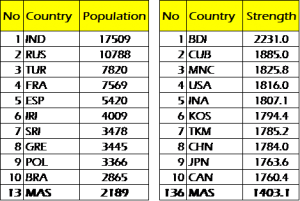Sejak PKP dikuatkuasakan dan perintah penjarakkan sosial di perkenalkan, banyak kejohanan sukan catur yang terpaksa di tunda, dibatalkan atau disusun semula bagi mematuhi syarat-syarat tersebut. Ini adalah kerana sukan catur secara amnya memerlukan kesemua pemain, pegawai dan penganjurnya untuk berkumpul didalam satu ruang tertutup – seperti dewan, yang secara langsung menjejaskan keberkesananan penjarakkan sosial yang perlu dipatuhi. Dengan tiadanya aktiviti catur pada ketika PKP dikuatkuasakan, ramai pemain mula memberikan fokus kepada permainan catur secara “atas-talian” atau online bagi menggantikan cara permainan “atas-meja” sebagaiman yang biasa dilakukan. Dan susulan perkembangan ini, pertandingan catur di beberapa laman sesawang – samada ianya menawarkan hadiah atau pun tidak, mula dikunjungi dan semakin diminati ramai.
Catur di era penjarakkan sosial. Video diperolehi dari sumber internet dan bertujuan untuk hiasan semata-mata (Tuanpunya/pencipta video ini tidak dapat dipastikan).
Dengan situasi di mana kehidupan normal tidak mungkin kembali didalam sekelip mata, dan ramai pemain telah mula membiasakan diri dengan permainan catur online, adakah ini akan menjadi norma baru untuk pemain-pemain catur menikmati permainan kesayangan mereka? Atau adakah kita akan kembali kepada cara permainan tradisional yang menemukan dua pemain berhadapanan diatas meja didalam dewan?
Sebagai satu permainan yang telah lama wujud, tidak mengejutkan sekiranya catur adalah antara beberapa permainan pertama yang dimainkan secara online namun begitu, popularitinya agak hambar dan tidak sehebat permainan online yang lainnya seperti FIFA atau DOTA, yang dimainkan secara kompetitif serta mampu menawarkan hadiah menarik dan lumayan walaupun ianya baru wujud sejak beberapa dekad lalu. Walhal, populariti catur sepatutnya dapat dipertingkatkan kerana cara, kaedah, nilai dan undang-undang permainan catur – samada dimainkan secara “atas-papan” atau “atas-talian”/online, tidak banyak berbeza dan tidak memerlukan penyesuaian yang drastik. Dengan populariti catur online meningkat ekoran pendemik COVID19 ini, adakah catur akan mula menyaingi populariti permainan online yang lainnya?
Antara kekangan utama untuk memajukan catur secara online ialah wujudnya perisian catur yang berupaya membantu pemain menghasilkan pergerakkan tepat yang mampu menghasilkan kemenangan. Perisian catur kini boleh didapati dengan mudah dan murah, dan kekuatan permainan yang dihasilkan oleh perisian catur seperti Stockfish, berkebolehan mencapai kekuatan FIDE rating melampui 3000 mata. Jurang ini amatlah ketara kerana juara dunia GM Magnus Carlssen dari Norway, hanya mempunyai FIDE rating terbaik setakat 2882 mata (untuk kawalan masa klassikal) dan 2986 mata (untuk kawalan masa blitz). Dengan erti kata lain, sekiranya seseorang pemain biasa berjaya mendapatkan bantuan perisian Stockfish untuk menentang juara dunia GM Carlssen, pemain tersebut secara teorinya mampu mengalahkannya dengan agak mudah. Dan ini adalah antara cabaran utama didalam penganjuran pertandingan catur dimana ramai pemain sanggup mengambil risiko untuk menipu dengan menggunakan perisian catur bagi memenangi sesuatu kejohanan atau untuk memperbaiki rating atau ranking FIDEnya. Walaupun ada yang pernah ditangkap, dibuktikan kesalahannya dan digantung dari bermain, ada juga pemain yang terlepas dari tuduhan dan terus bermain (dan menipu) didalam pertandingan-pertandingan yang seterusnya. Kesimpulannya, mengambil kira masih ada pemain yang sanggup menipu ketika menyertai pertandingan yang berlangsung di dewan permainan yang dipantau oleh para Arbiter yang bertugas, bagaimanakah caranya pula untuk menghalang pemain yang bermain secara online – yang tidak dapat dilihat secara zahir serta tiada pantauan yang boleh dibuat, untuk mempastikan bahawa pemain tersebut akan bermain dengan jujur? Bagi permainan yang bersifat “suka-suka”, mungkin ramai yang tidak ambil pusing sekiranya lawan mereka mendapatkan bantuan perisian atau tidak, tetapi bagi perlawanan yang menawarkan hadiah atau yang bersifat menaikkan ranking pemain, ianya tidak mungkin dapat di terima ramai atau tidak seharusnya berlaku.
Didalam usaha mengekang penipuan didalam sesuatu pertandingan online, penganjuran pertandingan blitz atau bullet adalah lebih digemari kerana secara logiknya, tempoh permainan yang pendek menjadikannya sukar untuk pemain mendapatkan bantuan perisian catur. Namun begitu, masih ada pemain yang mengaku berjaya berbuat demikian meskipun tempoh masa bermain adalah pantas dan terhad. Dari segi logiknya, ia mungkin juga boleh berlaku kerana didalam permainan catur terutamanya didalam displin blitz atau bullet, kelebihan membuat hanya satu pergerakkan yang tepat sudah cukup untuk membantu pemain memenangi sesuatu perlawanan. Sekiranya penipuan masih boleh dilakukan didalam masa yang begitu pantas, apatah lagi sekiranya perlawanan dijalankan menggunakan masa kawalan klassikal yang lebih panjang. Mungkin catur secara online hanya boleh digunakan untuk kawalan masa yang pendek, jadi adakah pertandingan disiplin klassikal akan lupus atau menjadi kurang popular disebabkan perubahan sebegini? Tidak menghairankan sekiranya permainan catur menggunakan masa klassikal akan tetap menjadi pilihan ramai kerana ianya merupakan kaedah utama untuk mengukur kebolehan dan kualiti permainan seseorang pemain.
Banyak juga laman sesawang catur membuat tuntutan bahawa sistem permainan mereka mampu mengesan setiap penipuan yang dilakukan, namun ini juga tidak menghalang pemain dari percubaan untuk menipu. Walaupun ada pemain yang tertangkap, namun terdapat juga pemain yang berbangga kerana berjaya menggodam sistem pantauan yang digunakan. Bagaimanakah sebenarnya sesuatu sistem permainan itu dapat mengesan sesuatu penipuan sedang dilakukan? Dalam hal ini, apa yang berlaku ialah laman sesawang tersebut juga menggunakan perisiannya tersendiri untuk menganalisa setiap permainan yang dimainkan. Dan sekiranya perisian anti-penipuan tersebut mengesan bahawa pemain yang sedang bermain berjaya membuat beberapa siri pergerakkan yang terlalu tepat dan jitu – yang di anggap sebagai pergerakkan yang “tidak mungkin mampu difikir manusia”, maka sistem anti-penipuan tersebut akan menganggap bahawa pemain tersebut telah menggunakan bantuan perisian bagi memenangi permainannya. Bagi pemain yang benar benar menipu dan ditangkap oleh sistem anti-penipuan tersebut, ianya bukanlah sesuatu hukuman yang perlu dirisaukan kerana pemain tersebut masih boleh berdaftar menggunakan nama samaran yang baru dan terus bermain secara online kerana tiada pengesahan secara fizikal yang diperlukan. Identiti samaran yang lain juga – seperti menggunakan nama isteri atau kawan, masih boleh digunakan bagi mengelak pemain itu dari di kesan sebagai pemain yang kerap menipu.
Jadi bagaimanakah caranya untuk mengelakkan penipuan online? Salah satu cara yang boleh diterima fikiran ialah untuk pemain yang bertanding menyediakan kamera web bagi membuktikan tiadanya peralatan lain yang diletakkan berhampiran komputernya, ataupun tiada perisian catur yang dimuat turun kedalam komputer peribadinya. Namun begitu, pemain perlu mengadakan sekurang-kurangnya 4-6 kamera web yang diletakkan di pelbagai sudut bilik bagi membantu pihak lawan memantau keadaan kawasan permainannya. Bagaimana pula sekiranya pemain berhasrat untuk ke bilik air, atau bergerak keluar dari kawasan permainannya dengan alasan untuk meregangkan badan atau mengambil minuman? Sehingga satu cara yang lebih efektif dapat diperkenalkan, populariti catur secara online tidak mungkin dapat dipertingkatkan dimasa yang terdekat ini dan pastinya akan kembali kepada cara permainan tradisional sebaik sahaja PKP berakhir.
Kalau difikirkan, kebanyakkan pertandingan online juga seperti FIFA, masih menemukan para pemain didalam satu dewan permainan cuma sesuatu perlawanan itu dijalankan secara online kerana sifat permainan itu sendiri yang memerlukan ianya di jana oleh komputer. Kenapa catur tidak dibuat sedemikian? Sekiranya catur online dimainkan mengikut cara permainan online yang lainnya dan tetap dibuat didalam dewan, bukankah lebih baik ianya terus dilakukan secara tradisional – dua pemain berhadapan di atas papan catur, kerana cara sebegini adalah lebih efektif dan berkesan.
Walaupun terdapat cara untuk catur online mengatasi segala isu penipuan dan memantau pemain supaya bermain dengan jujur, adakah ianya akan diterima oleh komuniti catur sebagai cara baru catur dipertandingkan?
Perkara ini juga tidak mungkin akan berlaku kerana populariti catur hanya bergantung kepada mereka-mereka yang memahami cara catur dimainkan. Samada ianya dimainkan secara fizikal atau secara maya menerusi online, catur bukanlah sejenis sukan yang penuh dengan aksi ataupun mudah dipelajari dengan sekali lalu. Sebagai contoh – permainan snooker juga memerlukan sedikit kefahaman untuk penonton menghargainya seperti mengetahui bahawa bola merah perlu dimasukkan terlebih dahulu sebelum bola berwarna lain boleh di masukkan untuk mendapat mata permainan. Dan diakhir permainan, bola juga perlu dimasukkan mengikut turutan warna yang tertentu. Namun demikian, walaupun tidak memahami undang undang permainan ini secara terperinci, aksi pemain mengawal dan memukul bola dengan tepat sudah cukup untuk membuat penonton merasa teruja dan kagum. Tambahan pula, secara amnya, konsep permainan dan perundangan permainan snooker agak mudah dan logik – pukul bola putih untuk memasukkan bola berwarna kedalam lubang. Hanya dengan sekali duduk dan memerhatikan sesuatu perlawanan snooker, sudah memadai untuk seseorang penonton memahami secara dasarnya objektif permainan, cara permainan dan undang-undang permainan. Bagi catur, tiada pergerakkan yang akan berlaku diatas papan sehinggalah seseorang pemain menggerakkannya, setiap buah catur pula mempunyai pergerakkan yang berbeza, dan walaupun objektif permainan ialah menawan buah King pihak lawan – mereka yang kurang faham mungkin akan bertanya kenapa seseorang pemain itu menyerah kalah sedangkan masih terdapat banyak buah catur di atas meja? Permainan online yang lainnya seperti FIFA atau DOTA, mempunyai ciri-ciri permainan snooker – iaitu ianya mempunyai aksi yang memukau penonton, ditambah lagi dengan ciri-ciri grafik yang menarik serta berwarna warni. Permainan online juga mampu membawa kita mengelamun ke alam fantasi bertemakan filem popular seperti Games of Thrones, Lord of The Rings ataupun Marvel Avengers. Dan perisian permainan online sentiasa diperbaiki dan diolah dengan penambahan ciri-ciri permainan yang baru, berserta karektor atau avatar pemain yang boleh diubahsuai mengikut kehendak seseorang pemain. Dan sekiranya ini semua dibandingkan dengan catur, yang mana ianya tetap permainan yang dimainkan diatas petak 8×8 – cuma warnanya sahaja yang boleh ditukar, tetap menggunakan 32 buah catur yang sama – cuma rekaan buahnya sahaja yang boleh diubah suai, dan masih kompleks untuk difahami oleh mereka mereka yang tidak bermain catur, bagaimanakah populariti itu boleh dipertingkatkan?
Jangan pula disalah anggap – catur tetap mempunyai pengikutnya yang tersendiri dan ianya tetap diminati dan popular, cuma dikalangan mereka-mereka yang boleh bermain catur. Keseronokkan permainan catur banyak terletak pada pertemuan fizikal antara dua pemain dimana kedua pemain ini – sebaik sahaja permainan tamat, mampu untuk berbincang tentang bagaimana permainan mereka telah dimainkan. Keseronokkannya juga terletak kepada aksi pemain lawan apabila dia cuba menipu dengan menepuk dahi dan bersungut “silap dah” walhal dia sebenarnya cuba memerangkan pihak lawan untuk mengambil umpan yang disajikan. Keseronokkan pertandingan catur ialah apabila pemain itu berjaya mendapat hadiah dan ianya di raikan diatas pentas dan diperhati ramai – “akulah yang hebat!” dan banyak lagi keseronokkan lain yang tidak mungkin dirasai dengan bermain secara online.
Catur secara fizikal juga adalah lebih mencabar kerana ia menjerumus seseorang pemain untuk menilai pemain lawan dari segi rupa dan gayanya – pemain lelaki secara amnya akan berasa lebih yakin bila bermain dengan pemain wanita, dan pemain yang lebih dewasa secara amnya berasa dia lebih hebat dari pemain cilik yang dihadapinya. Pemain juga boleh menggunakan perang psikologi dengan membuat gerak mula pertama yang pelik – sambil menunjuk riak muka yang bersahaja, seperti gerakkan 1. g4 atau 1. a3 yang mampu membuat pihak lawan berasa cuak, curiga dan tertanya-tanya “dia ni pandai main catur atau tidak?”. Terdapat dua cerita menarik berdasarkan perang psikologi permainan catur ini; Pertamanya, kisah dimana GM Korchnoi menghulurkan tangan untuk berjabat dengan GM Karpov dan Karpov, hanya memerhatikan Korchnoi dan membuat pergerakkan diatas papan tanpa menyambut salaman Korchnoi. GM Korchnoi tewas didalam permainan tersebut dan meninggalkan meja permainan dengan kasar. Keduanya, kisah dimana Bobby Fischer membuat gerakmula 1. c4 ketika melawan Boris Spassky dan Spassky menghabiskan masa hampir 30 min untuk memikirkan gerak balas yang terbaik. Ini adalah kerana Fischer terkenal dengan gerak mula pertamanya yang biasa iaitu 1. e4 dan Spassky bertungkus lumus membuat persiapan untuk mencantas Fischer namun akhirnya dikejutkan dengan gerak mula pertama yang berbeza dari biasa.
Walaupun catur tidak mungkin dapat membuat transisi sepenuhnya sebagai satu permainan “atas-talian” yang popular, tidak dapat dinafikan bahawa situasi PKP yang kita alami sekarang ini telah dapat membantu meningkatkan penerimaannya sebagai satu permainan online yang boleh diterima pakai. Setidak-tidaknya, ia memberikan ruang dan pilihan untuk pemain mengisi masa lapang dan memperbaiki cara permainan seseorang pemain dengan kaedah yang lebih mudah, murah dan menjimatkan masa.
Dari satu segi lain pula, catur online mungkin lebih berpotensi digunakan sebagai saluran pembelajaran dan pembaikan teknik permainan kerana pemain boleh berguru dengan pelbagai GM catur – dari seluruh pelusuk dunia, yang menyediakan kelas catur secara online. Laman sesawang pula boleh dijadikan sebagai pentas untuk latihan atau untuk mempraktikkan teori permainan, disamping mencari idea-idea baru yang mungkin boleh diguna pakai apabila bertanding didalam kejohanan yang lebih serius.
Sebagai seseorang yang telah lama bermain catur, saya juga menggemari permainan secara online namun bagi saya, ianya agak tidak bersesuaian untuk tujuan pertandingan yang bersifat lebih kompetitif dan serius. Pun begitu, agak menarik juga sekiranya terdapat cara yang efektif untuk mengawal penipuan online kerana penipuan amat mudah dilakukan dan mampu merosakkan semangat dan minat pemain yang mahu bermain secara jujur. Sehingga cara itu di temui, permainan catur “atas-papan” akan tetap menjadi pilihan utama cara catur dimainkan sekurang-kurangnya untuk beberapa tahun lagi.
Adakah anda bersetuju dengan saya?
#staysafe #playchess








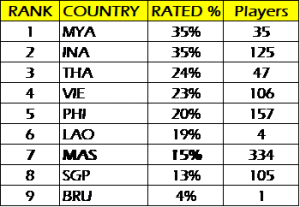

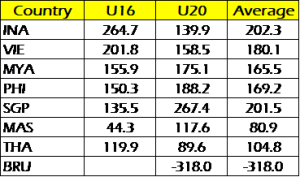



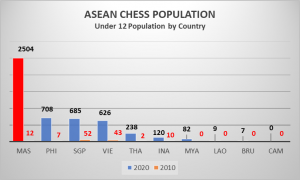

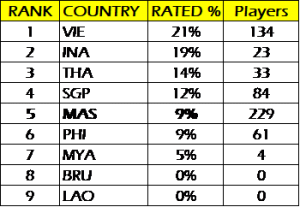

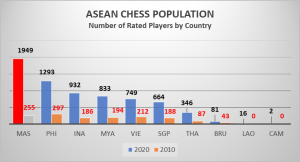
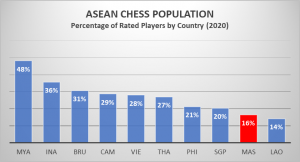

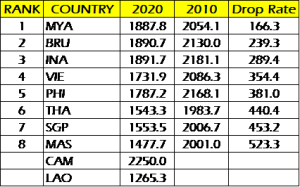

 Malaysia is yet to produce a GM albeit having increase its total FIDE population
Malaysia is yet to produce a GM albeit having increase its total FIDE population Malaysia has a sizeable population of female chess players at 28% from the overall population
Malaysia has a sizeable population of female chess players at 28% from the overall population

